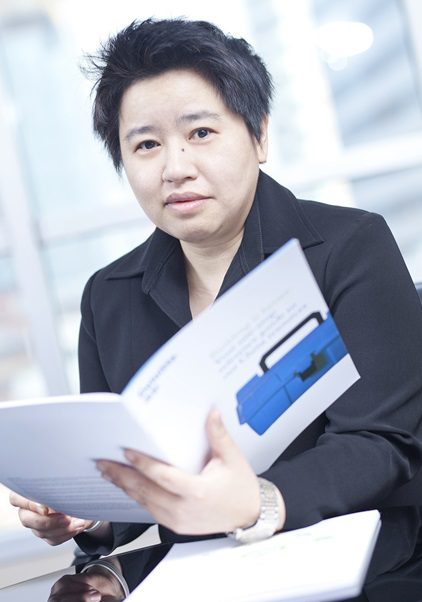The semiconductor industry is witnessing a surge in gen AI, which is playing an increasingly significant role in chip development. According to Deloitte 2024 global semiconductor industry outlook, Deloitte predicted in November 2023 that gen AI chip sales would reach a staggering $50 billion by 2024 and is expected to account for about 8.5% of sales. This growth is fueled by advancements across several key chip technologies, including logic processors built on cutting-edge nodes, high-bandwidth memory (HBM3), advanced 2.5D packaging, and advanced connectivity chips.
Despite the impressive projected sales of $50 billion for gen AI chips by 2024, it’s important to consider the volume. While a trillion chips were sold in 2022 for an average of just over half a dollar each, gen AI chips are a different story. Their high price tag – fetching a staggering $40,000 each in 2023 or 70,000x higher, means that $50 billion might only translate to a small fraction of total chip volume, potentially around 1.25 million units or less than 0.1%. This highlights the premium placed on these specialized chips compared to the vast number of lower-cost ones used in everyday electronics.
Gen AI chips are packages of special GPUs, special CPUs, special HBM3 in advanced 2.5D packaging, plus other special chips needed for connectivity in the data center. Enterprise software companies fuel gen AI chip demand, both for on-premise deployments and via cloud providers that provide the software companies with gen AI processing services. They might also have intention to integrate gen AI features into software offerings, seeking to monetize these capabilities.
Gen AI for Chipmaking
The chip industry is leveraging gen AI beyond just processing power. These advanced AI tools are transforming the entire semiconductor value chain:
- Improved Scheduling and Forecasting: Gen AI can generate more accurate production schedules and supply chain forecasts.
- Enhanced R&D: Research augmentation powered by gen AI can accelerate innovation.
- Advanced Defect Detection: Synthetic data created by gen AI can speed up anomaly and defect detection in chip production.
- Optimized Manufacturing: Simulation of manufacturing processes and digital twins can optimize production and resource management.
- Targeted Marketing: Gen AI can generate customized marketing content for better reach and engagement.
Despite these benefits, cost challenges remain such as building custom gen AI models can be expensive compared to traditional methods, large models might have high running costs that outweigh the speed benefits of automation. Human validation is also required to ensure accuracy and avoid biased results.
How semiconductor companies are using gen AI
Semiconductor factories are continuously striving for automation and efficiency. Gen AI tools present a significant leap forward in smart manufacturing to provide:
- Advanced Insights: Gen AI can analyze vast datasets to provide valuable insights for optimizing processes and equipment. These efforts involve connecting factory equipment, automating processes, using data analytics for decision-making, and predicting maintenance needs to prevent costly downtime.
- Sustainability Focus: Manufacturing at advanced nodes is energy-intensive. Smart manufacturing tools can help optimize processes and reduce the environmental footprint of chip production.
Semiconductor assembly and test provider to expand globally
While chip fabrication (front-end) has a more global presence, chip assembly and testing (back-end) has traditionally been dominated by Asia. This geographic imbalance presents a challenge for the US and Europe to bolster domestic chip fabrication capacity. To avoid supply chain complexities, they must also build up back-end capabilities alongside front-end investments. Further complicating matters, leading-edge chip performance is increasingly reliant on advanced packaging technologies, which necessitates new facilities to address these challenges: mastering new packaging and testing solutions quickly, building a specialized back-end workforce, offering diverse packaging options, optimizing resource usage, strengthening IT infrastructure for AI/ML integration, and implementing advanced testing capabilities for complex chip designs.
Cybersecurity Concerns
The semiconductor industry confronts a unique cyberthreat landscape. Beyond common ransomware attacks, chipmakers possess highly valuable and restricted intellectual property, making them prime targets for the actors, especially with rising chip importance and geopolitical tensions. This focus on IP as a cyber target, coupled with potential advanced attacks masking as ransomware, creates an asymmetric battleground where the industry may face far more sophisticated threats than traditional cyberattacks. This evolving landscape presents significant challenges for semiconductor executives in the coming years.
Moving forward, executives in semiconductor industry should be mindful for this dynamic landscape. Inventory management requires balancing potential dips in traditional demand with potential surges in specialized chip demand. Strategic M&A opportunities abound in design, materials, and packaging. Geopolitical tensions necessitate reevaluating channel partnerships and sourcing locations. Cross-border deals may involve complex tax and regulations. Rising interest rates and valuation multiples demand financial prudence. The talent war necessitates exploring alternative talent pools and upskilling strategies. Generative AI, while a solution, might also create a new talent demand.
partnerships and sourcing locations. Cross-border deals may involve complex tax and regulations. Rising interest rates and valuation multiples demand financial prudence. The talent war necessitates exploring alternative talent pools and upskilling strategies. Generative AI, while a solution, might also create a new talent demand.
Semiconductor situation in Thailand
Thailand’s Trade Policy and Strategy Office indicated that Thailand’s semiconductor trade is classified into two groups: Integrated Circuit and Diodes-Transistors-Semiconductor. Thailand’s Ministry of Commerce reported that Thailand’s supplies of semiconductor improved as integrated circuit import increased from 669,575 mTHB in 2022 to 684,476 mTHB in 2023, or grew 2% YoY. The highest source came from Taiwan at 256,531 mTHB, followed by Japan (72,595 mTHB) and China (69,150 mTHB). The import in Jan 2024 valued at 74,834 mTHB, which increased 23% YoY.
For diodes-transistors-semiconductor, the import increased from 101,028 mTHB in 2022 to 124,718 mTHB in 2023, or rose 23% YoY, with the highest fuel from China at 64,229 mTHB, followed by Japan (16,153 mTHB) and the US (11,024 mTHB). The import in Jan 2024 valued at 10,490 mTHB, which increased 10% YoY. Thailand is also actively attracting US investment in chip manufacturing to promote its infrastructure and electric vehicle (EV) hub ambitions. Prime minister Srettha Thavisin is promoting Thailand’s readiness as a production base for various industries to global leaders and private sectors. The discussion to foster collaboration between Thailand and the US in the semiconductor industry is a crucial step forward for both countries and is expected to strengthen economic ties, promote technological innovation, and create high-skilled jobs in Thailand. Besides, Thailand’s Board of Investment (BOI) further indicates that there will also be upcoming investment in an upstream semiconductor factory in Thailand to produce wafers, a key component of upstream chips.
The article is written by Parichart Jiravachara, Partner, Risk Advisory and contributed by Tasada Sangmanacharoen, Senior Consultant, Clients & Markets, Deloitte Thailand

